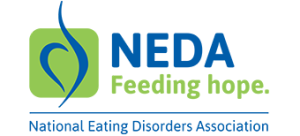
National Eating Disorders Association is a registered 501(c)(3) nonprofit, EIN: 13-3444882
Learn | Get Involved | Get Help | About Us | NEDAWalk | NEDA Blog | News & Press | Ways to Give
National Eating Disorders Association is a registered 501(c)(3) nonprofit, EIN: 13-3444882
© Copyright 2023 National Eating Disorders Association. All rights reserved.

